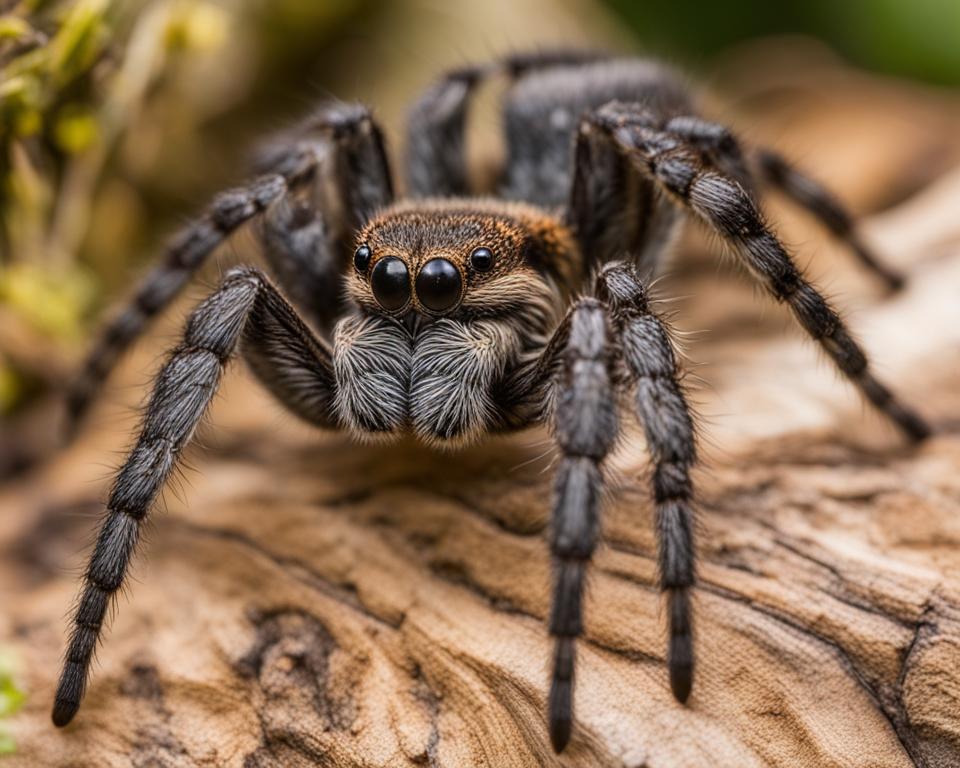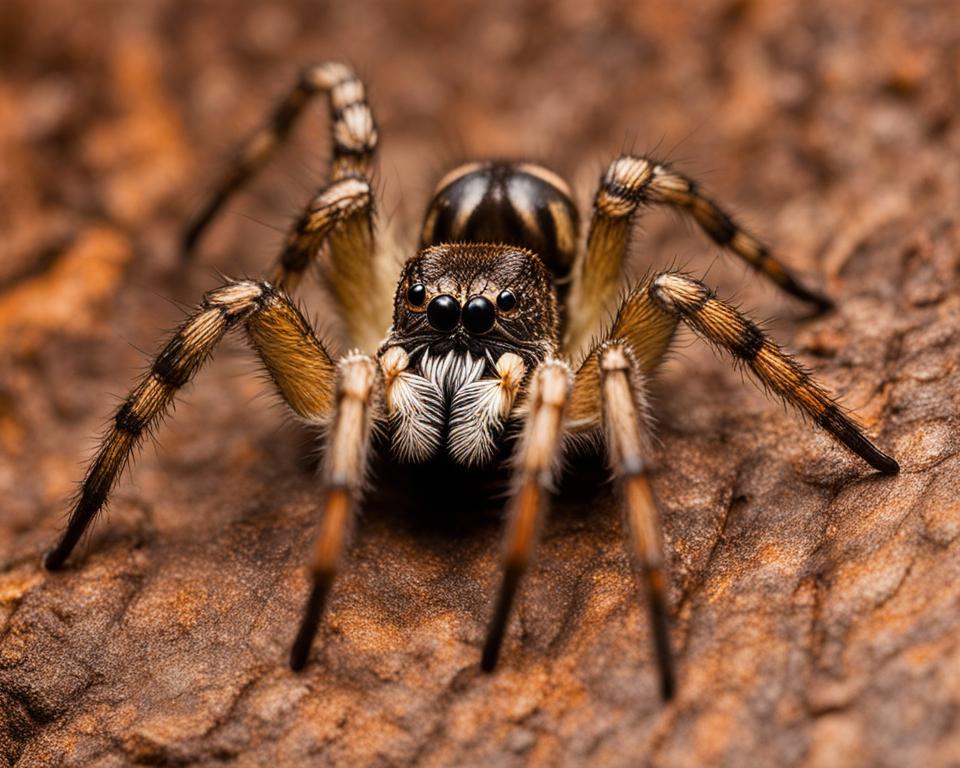Spiders are common household pests that can be a cause of concern for many people. When it comes to identifying the different species of spiders, two that are often compared are the house spider and the wolf spider. Both spiders might look similar to the untrained eye, but there are several key differences between them. In this section, we will explore these differences, learn how to distinguish between them, and understand more about these common arachnids.
Key Takeaways
- The house spider and wolf spider are two common spider species often compared.
- There are distinct differences between the two spiders in physical characteristics and behavior.
- By understanding the differences, you can better identify these spiders and take appropriate measures for control and prevention in your home.
- Stay informed and proactive to maintain a spider-free environment.
House Spider: Identification and Characteristics
If you want to prevent house spiders from invading your home, it’s essential to learn how to identify them. House spiders are small, ranging from 1/4 inch to 5/16 inch in length. They have round abdomens and long, thin legs, covered in fine hairs. The color of their body varies from yellowish-brown to gray to black. A notable characteristic of these spiders is that they typically build their webs in corners or crevices of houses.
House spiders are not aggressive and tend to avoid human contact. However, if they feel threatened, they might bite. The venom of a house spider is not dangerous to humans and typically causes only mild to moderate discomfort.
The most common house spider species found in the United States are:
| Common Name | Scientific Name | Characteristic |
|---|---|---|
| American House Spider | Parasteatoda tepidariorum | Yellowish-brown color, round abdomen, and fine hairs on legs |
| Domestic House Spider | Tegenaria domestica | Dark brown color, striped legs, and thick body |
| Southern House Spider | Kukulcania hibernalis | Brownish-black color, shiny legs, and large size |
By recognizing common house spiders and their features, you can spot them quickly and take necessary precautions to prevent them from invading your home.
Wolf Spider: Identification and Characteristics
If you want to learn how to identify wolf spiders, you first need to know their unique characteristics. Unlike other spiders that have oval-shaped bodies, wolf spiders have robust, hairy bodies that can vary in color from brown to gray. These arachnids possess excellent eyesight, with four pairs of eyes arranged in different directions on their face.
Wolf spiders are known for their impressive hunting skills. They do not spin webs to catch prey, but rather hunt them down using their speed and agility. When they locate their prey, they swiftly pounce and inject venom into their victims, paralyzing them.
There are several common species of wolf spiders in the United States, including:
| Species | Physical Description | Range |
|---|---|---|
| Carolina Wolf Spider | Dark brown or gray; white stripes on the legs | Eastern US |
| Texas Wolf Spider | Dark brown or black; hairy legs | South Central US |
| California Wolf Spider | Brown; distinct stripes on the head | Western US |
Remember, wolf spiders are not generally aggressive towards humans unless they feel threatened. If you spot a wolf spider in your home, avoid provoking it and calmly remove it to an outdoor area away from your living space.

Tip: When identifying wolf spiders, pay attention to their robust, hairy bodies and distinct eye patterns.
Comparing House Spiders and Wolf Spiders
When it comes to spider identification, it’s essential to understand the distinguishing characteristics of each species you encounter. The most significant difference between house spiders and wolf spiders is their physical appearance. While both spiders have eight legs and are covered in hair, house spiders are generally smaller and have rounder bodies. Wolf spiders, on the other hand, are larger and flatter, with longer legs that help them move quickly over various terrains.
Another important distinction between house spiders and wolf spiders is their behavior. House spiders often spin webs to catch insects and prefer to live in undisturbed areas of your home, such as attics, basements, or closets. They do not generally bite humans, unless they feel threatened. Wolf spiders, on the other hand, are hunters and do not spin webs. They prefer to live outdoors, but they may come inside in search of prey. While wolf spiders can bite humans, they are not typically dangerous and their venom is not lethal.
It’s also worth noting how house spiders and wolf spiders react to humans. House spiders are shy and tend to avoid people, while wolf spiders are more curious and may be more likely to run towards humans. If you do encounter a wolf spider, it’s best to give it space and let it go on its way.
In summary, while house spiders and wolf spiders may appear to be similar, there are significant differences in their physical attributes, behavior, and reactions to humans. By understanding these distinctions, you can better identify these spiders and determine appropriate control measures to keep them out of your home.
Venomous Spiders: House Spider or Wolf Spider?
One of the most common fears people have when it comes to spiders is their potential to be venomous. However, not all spider species pose a threat to humans. In this section, we will discuss the venomous nature of house spiders and wolf spiders, giving you a better understanding of what to expect when encountering these arachnids.
Firstly, it’s important to know that both house spiders and wolf spiders are venomous. However, their venom is not typically harmful to humans. Their bites may cause some discomfort, such as redness, itching, or swelling, but rarely anything more severe. In fact, many bites from these spiders go unnoticed as they are not usually aggressive towards humans and only bite when they feel threatened.
While both spider species have venom, it’s important to note that their behaviors can differ. House spiders are often found in homes and tend to build webs in dark corners or under furniture. They are generally not aggressive and will avoid human contact whenever possible. On the other hand, wolf spiders are more active and may wander into homes in search of prey. They are also more likely to bite when they feel threatened, but such instances are still rare.
So, what should you do if you encounter a house spider or wolf spider in your home? The good news is that there are several effective spider control methods to manage these situations. One option is to use spider traps to capture the spider without harming it. Another option is to use natural remedies such as peppermint oil or vinegar to deter spiders from entering your home.

It’s also important to keep your home clean and clutter-free, as spiders are attracted to messy, undisturbed areas. Make sure to seal any cracks or crevices where spiders might enter, and keep outdoor lights off at night to prevent attracting insects, which can attract spiders.
In conclusion, while both house spiders and wolf spiders are venomous, their bites are generally harmless to humans. By understanding their behavior and implementing effective spider control methods, you can coexist with these spiders safely and comfortably in your home.
Spider Prevention and Control
Now that you can distinguish between house spiders and wolf spiders, it’s essential to know how to prevent and control their presence in your home. Follow these tips to keep spiders at bay and ensure a spider-free environment:
- Eliminate clutter: Clutter provides spiders with hiding places, so remove any unnecessary items from your home.
- Vacuum regularly: Vacuuming removes webs and spider eggs, reducing the spider population in your home.
- Seal cracks and gaps: Spiders can enter your home through even the smallest cracks, so seal them with caulk or weather-stripping.
- Use spider repellents: Natural spiders repellents such as peppermint oil or vinegar can help keep spiders away.
- Check outdoor items: Before bringing outdoor items into your home, inspect them for spiders or spider eggs.
If you’re dealing with a severe spider infestation, you may need to use spider control products. However, always read and follow the label instructions carefully, and keep them out of reach of children and pets.
By following these tips, you can effectively prevent and control spider infestations in your home. Remember, identifying the type of spider you are dealing with is the first step towards proper spider control and prevention. Stay vigilant, and your home can remain spider-free!
Conclusion
In conclusion, identifying and controlling spiders in your home is an essential part of maintaining a safe and healthy environment. By learning to distinguish between house spiders and wolf spiders, you can take appropriate steps for prevention and control.
To ensure effective spider prevention, keep your home clean and tidy, seal any cracks or openings in walls and floors, and minimize clutter. If you encounter a spider, avoid panicking and simply remove it using a vacuum or a jar and a piece of paper. Remember that not all spiders are venomous or harmful to humans, but it’s always better to err on the side of caution and seek professional help if you are unsure.
With the right spider control techniques and a bit of vigilance, you can maintain a spider-free home and enjoy the peace of mind that comes with it. Stay informed, stay proactive, and keep your living space safe and inviting for you and your family.
FAQ
What are the key differences between house spiders and wolf spiders?
House spiders and wolf spiders have different physical attributes, behaviors, and habitats. House spiders are smaller in size, prefer to build their webs indoors, and typically have a round abdomen. On the other hand, wolf spiders are larger, do not build webs, and are commonly found outdoors. They have a more elongated body shape and are known for their hunting abilities.
How can I identify a house spider?
House spiders can be identified by their small size, typically ranging from 4-9 mm in length. They have a round abdomen, usually brown or gray in color, and may have distinctive markings on their body. Common house spider species include the American house spider, cellar spider, and cobweb spider.
What are the characteristics of a wolf spider?
Wolf spiders are larger in size, with body lengths ranging from 10-35 mm. They have an elongated body shape, long legs, and often have a pattern of dark and light markings on their bodies. Unlike house spiders, wolf spiders do not build webs but are active hunters. Common species of wolf spiders include the Carolina wolf spider, grass spider, and nursery web spider.
How do house spiders and wolf spiders differ?
House spiders and wolf spiders differ in terms of their preferred habitats, behaviors, and physical characteristics. House spiders are usually found indoors, build webs to catch prey, and have a round abdomen. On the other hand, wolf spiders are commonly found outdoors, do not build webs but actively hunt for their food, and have an elongated body shape.
Are house spiders or wolf spiders venomous?
While there are venomous spiders, neither house spiders nor wolf spiders are considered highly venomous to humans. Both species may bite if provoked, but their bites are generally harmless and cause mild irritation. It is important to exercise caution and avoid direct contact with any spider.
How can I prevent and control spiders in my home?
To prevent spiders in your home, keep your living spaces clean and clutter-free, regularly vacuum and dust, seal any cracks or gaps in windows and doors, and remove their food sources like insects. If you have a persistent spider problem, you can use spider repellents or contact a professional pest control service for assistance.
